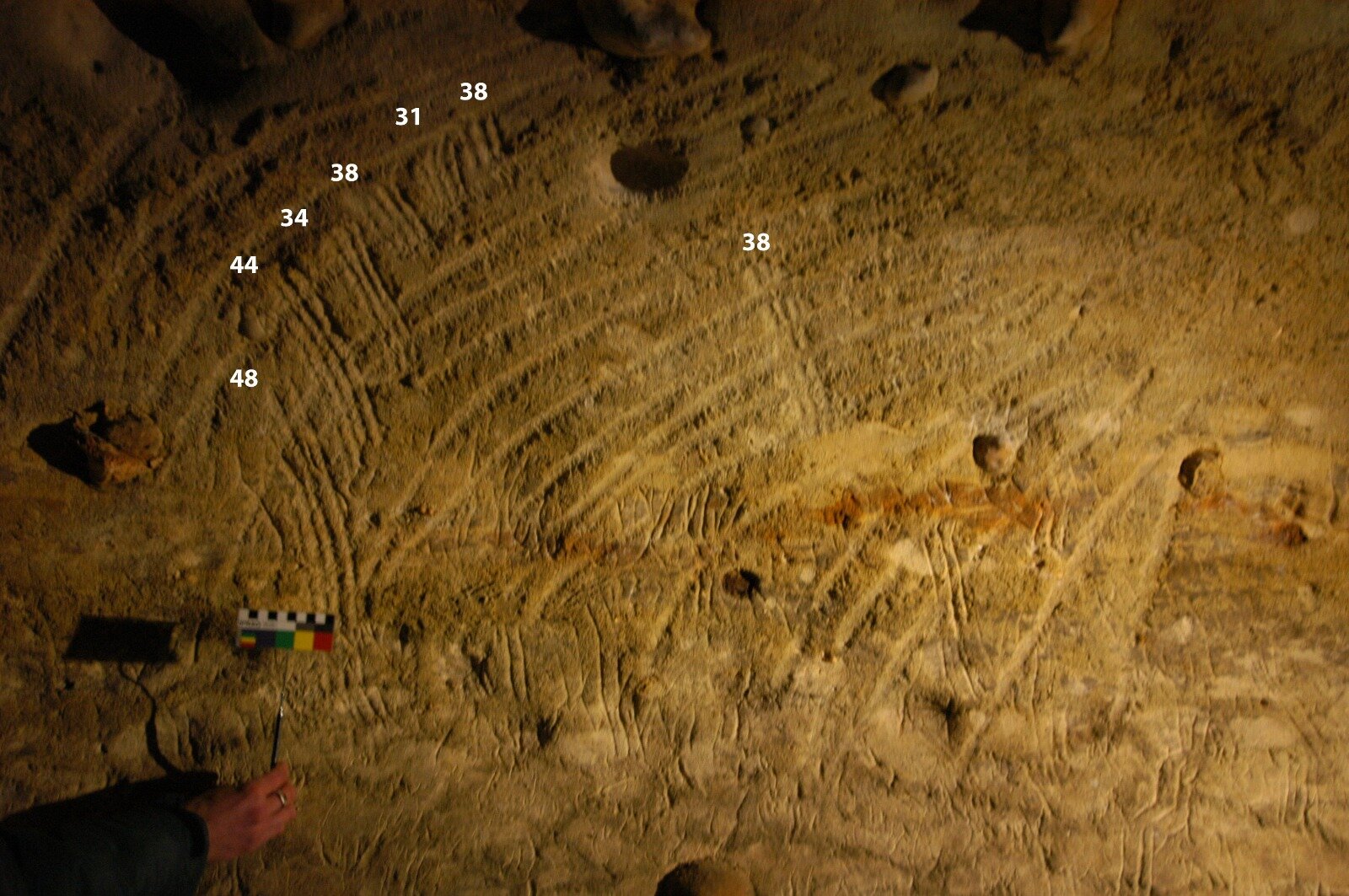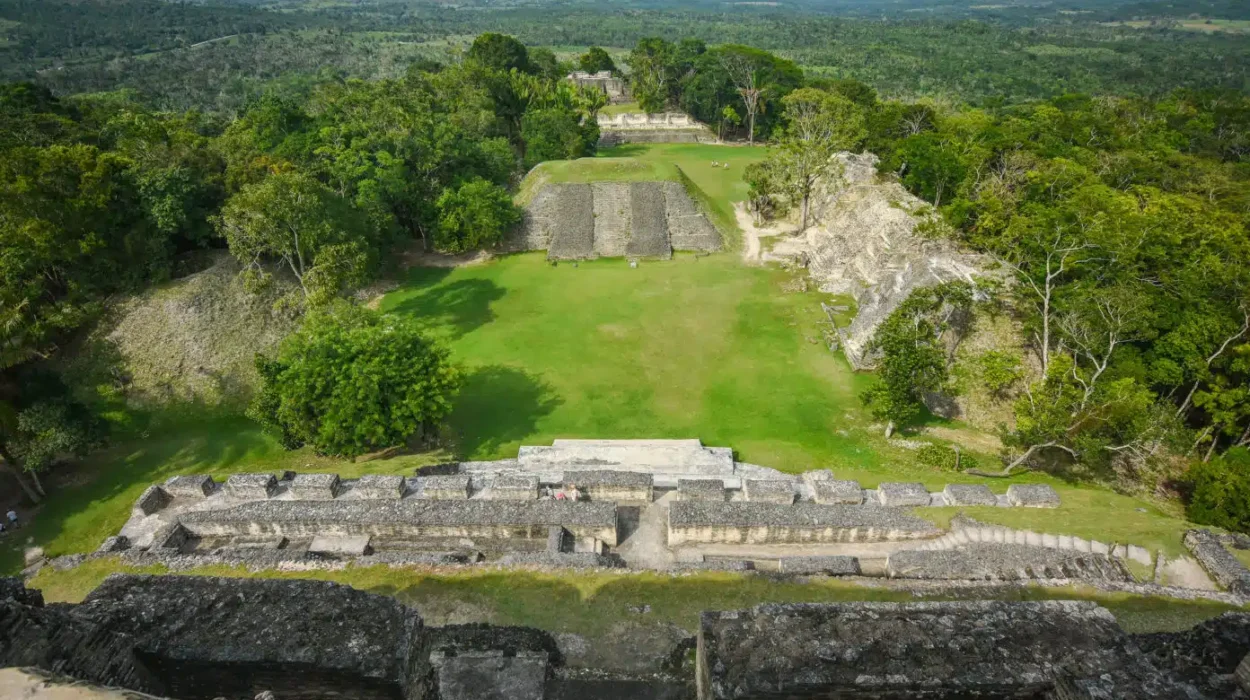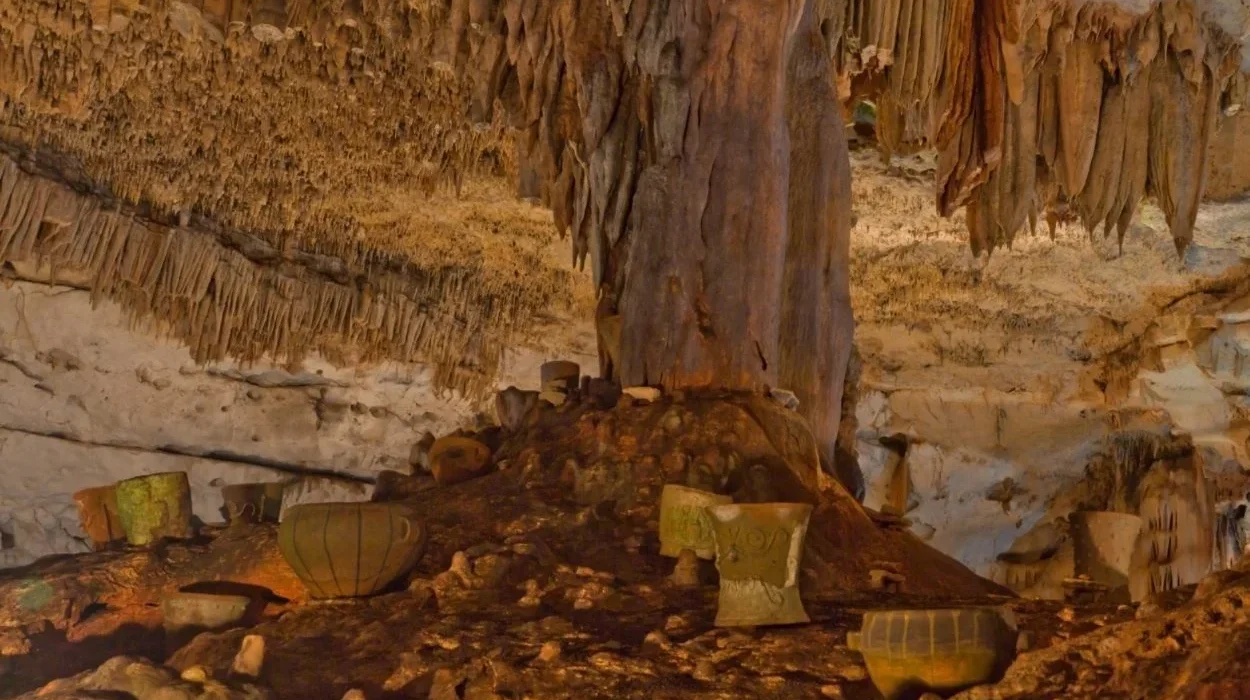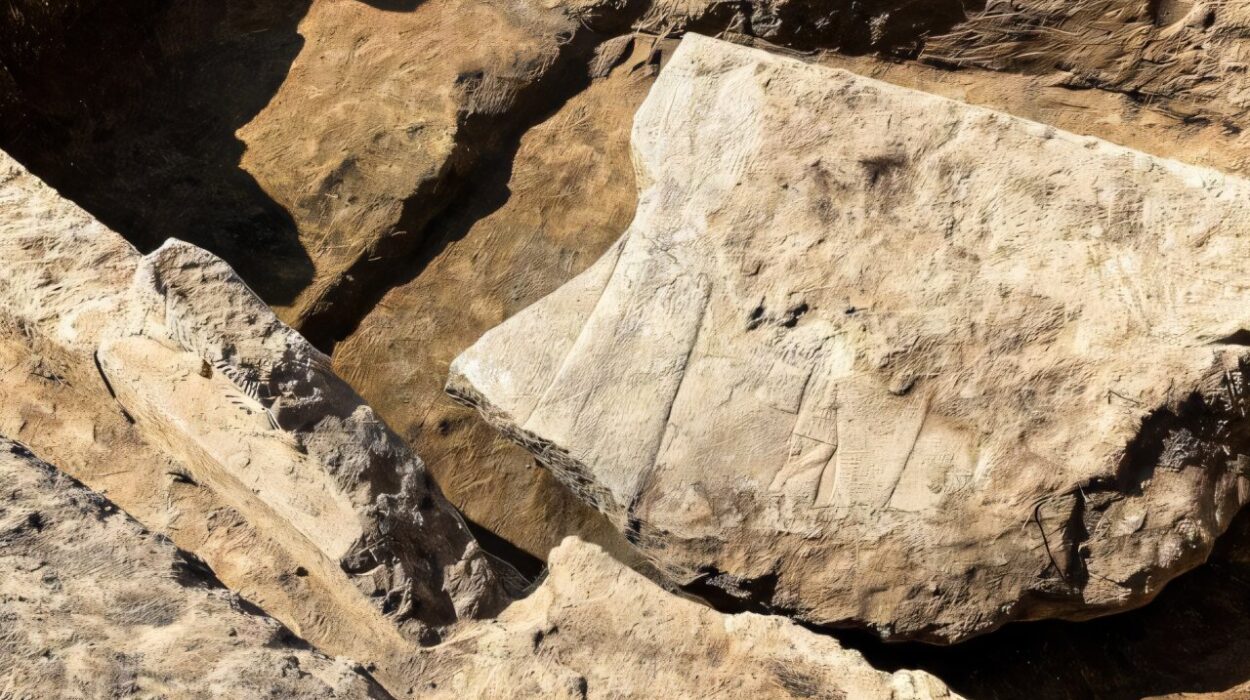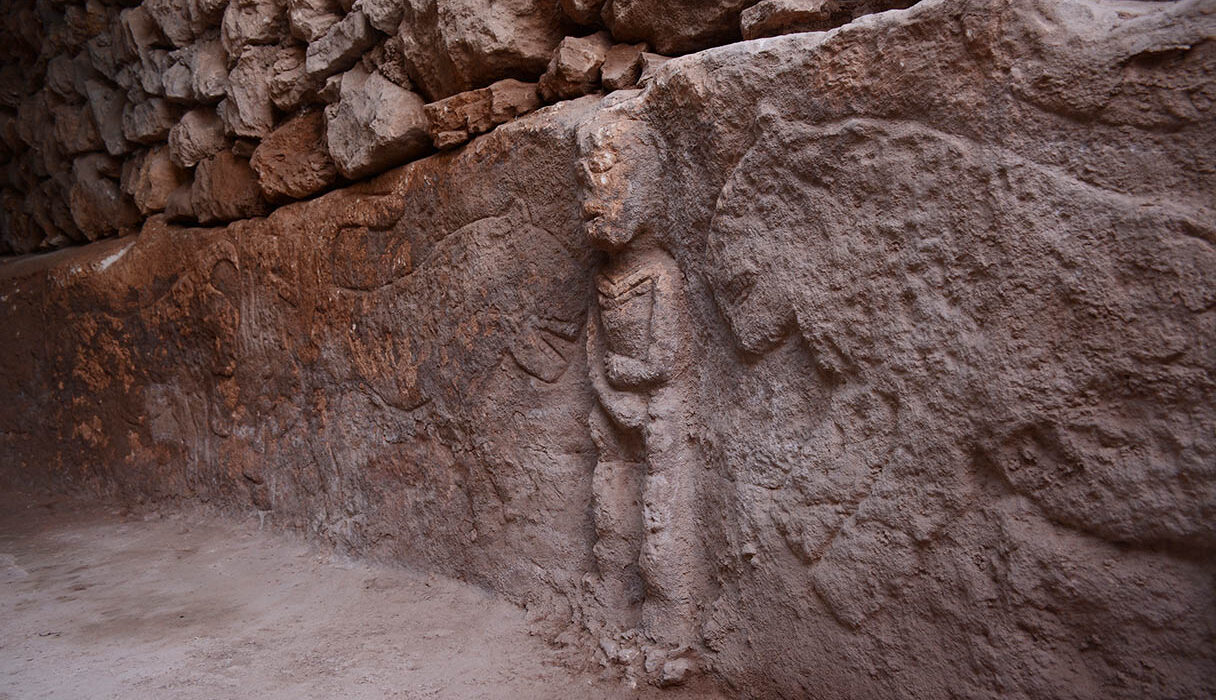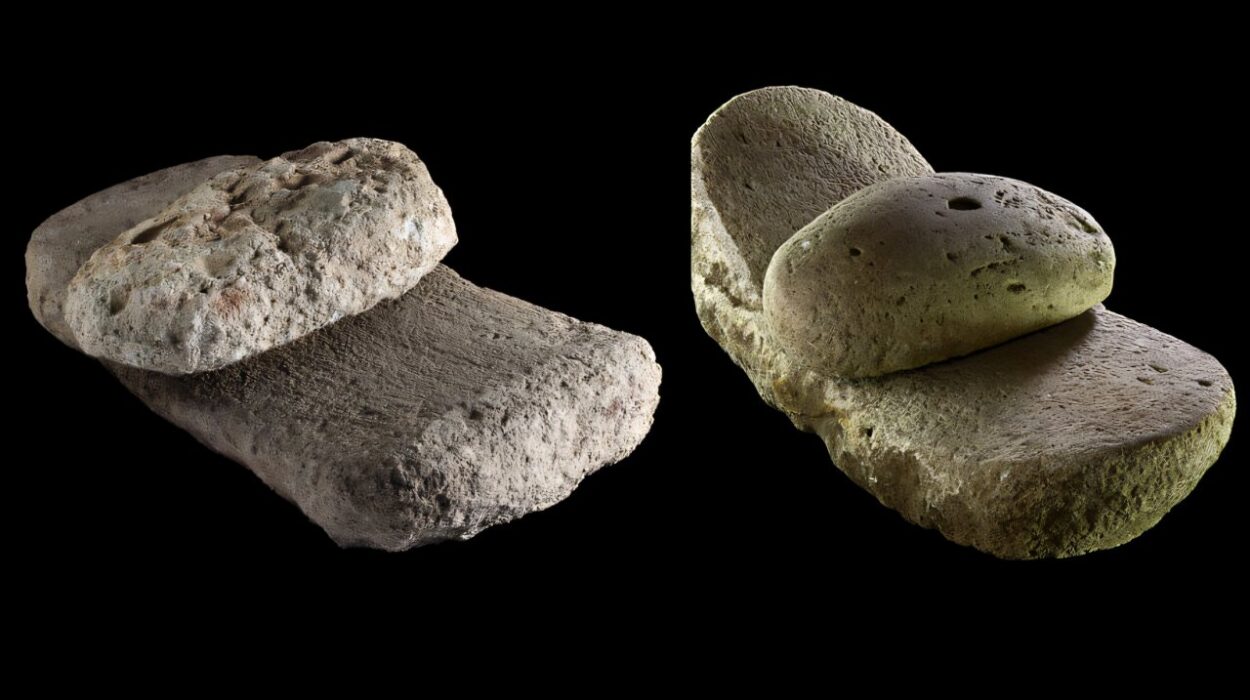For centuries, the enigmatic art found in deep, shadowy caves has captivated scholars and researchers, offering a glimpse into the minds and lives of our prehistoric ancestors. The vivid handprints, intricate depictions of animals, and strange symbols have long been interpreted as expressions of ancient human culture, spirituality, and daily life. Yet, one particular mystery has puzzled archaeologists: Why did ancient humans bring their young children into the dark, perilous depths of caves to participate in the creation of these prehistoric artworks?
A team of researchers from Tel Aviv University, led by Dr. Ella Assaf, Dr. Yafit Kedar, and Prof. Ran Barkai, has proposed a groundbreaking new hypothesis that sheds light on this age-old question. The researchers believe that the involvement of children in the creation of cave paintings was not merely a matter of education or tradition—rather, it was tied to the belief that children, due to their unique qualities, played a vital spiritual role in their communities.
Unraveling the Mystery: Why Were Children in Caves?
Cave art, created between 40,000 and 12,000 years ago, has been discovered in over 400 caves, with the majority located in France and Spain. These paintings and engravings offer an extraordinary glimpse into the worldview of early humans. Researchers have long noted the presence of children’s handprints and even finger-painted depictions within many of these caves. Additionally, footprints and handprints belonging to children as young as two years old have been found alongside those of adults, leading to a crucial question: why were these very young children brought along on dangerous journeys to caves that required crawling through tight passages, descending into shafts, and navigating areas with low oxygen?

Traditionally, many scholars have suggested that the presence of children in these caves was educational—that young ones were brought along to learn about their culture, traditions, and the significance of the cave art. But this explanation doesn’t fully account for the perilous nature of the journey or the deeper symbolism tied to the caves themselves. The Tel Aviv University team, however, has proposed a more nuanced theory that reimagines the role of children in these ancient rituals.
Children as Spiritual Mediators: A Cultural and Spiritual Role
The new hypothesis put forward by Dr. Assaf, Dr. Kedar, and Prof. Barkai is that children, particularly very young ones, were not merely participants in a learning experience. Instead, they were regarded as “active agents” in their communities—mediators between the human world and the otherworldly realms. According to the researchers, children were believed to possess special qualities that allowed them to communicate with spiritual entities residing in the depths of the earth and the cosmos.
Dr. Assaf explains, “While many studies have focused on the educational role of children in cave art, we argue that these children had a far more profound purpose. They were viewed as capable of interacting with entities from the beyond—entities that were thought to be more accessible from the depths of caves, which were believed to be portals to other worlds.”
In other words, caves were not simply physical spaces; they were thought to be metaphysical thresholds, gateways to the underworld or the spiritual realm. Within these deep, dark environments, early humans likely believed they could commune with cosmic beings or ancestral spirits—entities that held the power to shape their lives, grant them wisdom, and influence their survival. And children, with their unique cognitive and mental states, were perceived as having the ability to bridge the gap between these realms.

The Cognitive and Spiritual World of Children
The idea that children were seen as intermediaries between the physical and spiritual worlds is not new, but it offers a fresh perspective on the purpose of cave art. Dr. Kedar notes that, despite the widespread research into cave art, few studies have truly focused on the role of children. “The prevailing view has been that children participated in cave art as part of an educational process. But in our research, we suggest that their involvement was deeply spiritual.”
Drawing on studies of Indigenous societies around the world, the researchers point out that children have often been viewed as “liminal beings”—individuals caught between two worlds. On the one hand, children are part of the living world, but on the other, they have recently come from the unknown world before birth, making them uniquely positioned to act as intermediaries. This concept has been observed in cultures throughout history, where children are seen as particularly adept at communicating with non-human entities due to their mental flexibility, imagination, and connection to both the physical and metaphysical realms.
In early human societies, where survival was closely tied to maintaining a balance with nature and its spiritual dimensions, children may have been seen as vital agents in establishing relationships with the forces that governed the world—such as the spirits of animals, the spirits of ancestors, or the cosmic forces that dictated the cycles of life and death.
Caves as Gateways to the Beyond
A key element of this hypothesis is the idea that caves were viewed as sacred sites—gateways to the underworld or the realm of spirits. Prof. Barkai emphasizes the importance of caves in prehistoric spirituality, noting, “Many societies regarded caves as places of cosmic significance, where humans could connect with entities from the underworld or otherworldly realms. These caves were seen as portals that allowed humans to access hidden knowledge and engage in rituals that addressed existential questions about life, death, and survival.”
The researchers suggest that the act of creating cave art in these sacred spaces was not merely an aesthetic or cultural exercise, but a ritualistic practice aimed at engaging with these powerful entities. The art itself—whether handprints, animal depictions, or abstract symbols—was believed to hold spiritual significance, acting as a conduit between the human world and the divine. Children, because of their perceived connection to both worlds, were seen as ideal participants in these rituals.
By taking children into the depths of these caves, adults may have been seeking to harness the special abilities attributed to young children—to channel messages from the spirits and gain access to knowledge or power that could aid their survival, hunting, and spiritual well-being. Children’s innocence and vulnerability may have been viewed as qualities that made them particularly attuned to the unseen forces of the world.
A Cultural Reinterpretation of Prehistoric Life
The findings from Tel Aviv University represent a significant shift in our understanding of prehistoric human life. While much of the focus on cave art has revolved around the educational and cultural aspects of these ancient practices, this new hypothesis introduces a deeper, more spiritual dimension to the role of children in prehistoric societies.
Dr. Assaf emphasizes that this theory is supported by archaeological evidence from other indigenous cultures, where children are often seen as key figures in rituals that connect the living with the supernatural. By considering the unique cognitive and spiritual qualities of children, the researchers suggest that early humans may have viewed them as essential to their attempts to communicate with the forces that governed their world.
“The inclusion of children in these cave rituals was not a random or incidental act,” Dr. Assaf concludes. “It was a deliberate, purposeful action aimed at fulfilling an essential spiritual need within the community. Children, with their perceived ability to bridge the gap between worlds, were integral to these ancient rituals and the creation of cave art.”
Conclusion: Rewriting the Story of Ancient Cave Art
The Tel Aviv University study opens up new avenues for understanding the cultural and spiritual practices of prehistoric societies. By focusing on the role of children, the researchers have proposed a fascinating new interpretation of cave art—one that highlights the profound spiritual significance of these ancient rituals and the essential role children played in them.
As our understanding of prehistoric life continues to evolve, the connection between ancient art, spirituality, and the unique qualities of childhood offers a compelling and thought-provoking lens through which to view our distant ancestors. Far from being passive observers, the children who ventured deep into the caves were active participants in rituals that helped shape the very foundations of human culture, spirituality, and survival. Their role, as mediators between this world and the next, underscores the deep and enduring bond between humanity and the mysteries of the beyond.
Reference: Ella Assaf et al, Child in Time: Children as Liminal Agents in Upper Paleolithic Decorated Caves, Arts (2025). DOI: 10.3390/arts14020027
